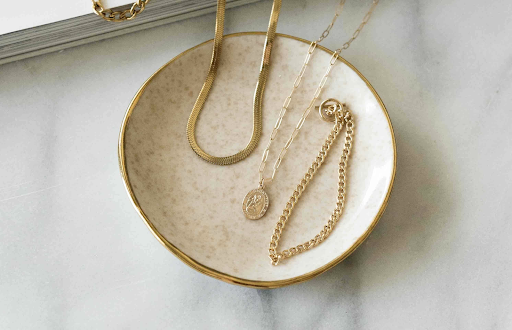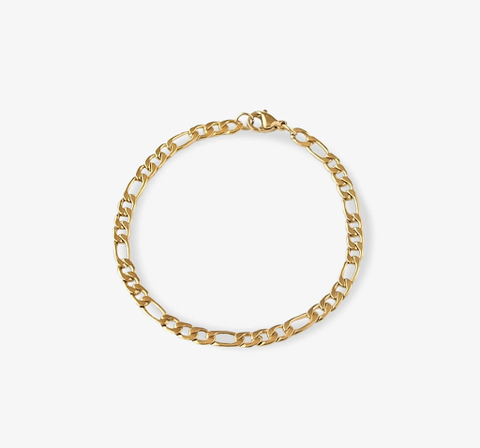
Busting the Biggest Myths About Gold Jewelry
Lester Fangonilo - December 25, 2021

Even with the emergence of platinum on the scene and the recent increase in the popularity of silver jewelry, it cannot be disputed that gold remains king when it comes to bling. The brilliant glow of the metal, its malleability which lends it well to being formed into aesthetically pleasing shapes, and its overall desirability as a precious item have all contributed to its continuing popularity.
However, even in these science-centric days of the 21st century, there are still a number of myths regarding gold, especially where gold jewelry is concerned. In today's feature, we aim to debunk these myths in order to improve your knowledge and understanding of this amazing metal.
Myth 1: White Gold and Rose Gold Aren't Real Gold - Well, Not Necessarily
One of the misconceptions regarding gold is that the real thing should invariably be pale yellow and that anything else has been chemically altered or is just some lesser metal being passed off as gold. Surprisingly, the late fantasy author David Eddings actually hit upon the truth in one of his novel cycles: the actual color of real gold is - surprise - reddish when it is in its initial state prior to being dug out. Refining the gold through both physical and chemical means is what gives it its characteristic pale yellow hue.

But, then again, you may ask what about white gold or rose gold. These are also real gold - 12, 18, and 24K, depending on the piece - but they get their characteristic colors from the lesser metals used to strengthen them for jewelry making. In the case of rose gold, the metal is only refined up to a certain degree to retain a little of its original red, but, more often than not, its color is mostly due to the high percentage of copper used in the alloy. In the case of white gold, the alloy tends to be made with a white mineral like manganese or nickel or it could have a considerable percentage of silver or platinum in the mix.
Myth 2: It is Better to Buy Gold Jewelry With a Higher Karat Rating - If You're Buying It as an Investment Piece
All right, let's make something clear here: the karat rating - the number that tends to come up whenever gold is talked about - pertains to the purity of the gold used in the piece of jewelry or, more simply, just how much of the finished jewelry is actually gold.
24K is the purest form of gold, thus making it the most expensive form of the metal and pieces made with the material command a considerable price. However, does this make 24K jewelry a better buy? Well, it depends on whether you're buying jewelry more as an investment rather than as personal adornment.
Due to its purity, 24K gold is essentially softer and more malleable than either 12K or 18K which are usually alloys reinforced with materials like silver, palladium, and copper. As such, wearing 24K gold jewelry on a daily basis is not recommended, especially if you tend to be exposed to the elements, use public transport, or work a job where your hands and other body parts are exposed to harsh chemicals such as detergents.
Elemental and chemical exposure could lead to some serious scuffing and denting on your precious pieces. Likewise, commuting while wearing 24K jewelry tends to be a potential theft risk. See, there is a reason why celebrities save the really ostentatious bling for red carpets and galas - or they happily accept a loan thereof from the world's most prominent jewelers.
For daily wear, we suggest sticking to 12K and 18K gold pieces: all of the sparkle with less of the stress.
Myth 3: Biting Gold Isn't The Best Way To Know If It's Real
It's something we've seen in films like Indiana Jones or any flick or story that involves golden bounty: the intrepid adventurer - or his avaricious companion - picks up a doubloon or denarius from a pile they find in an ancient tomb and takes a bite. If his teeth leave a visible impression, then they've just hit the jackpot.
While this is certainly a legitimate way to test the authenticity of gold, it is not the most prudent nor the most accurate. (Think of the potential damage to your dental work!)
For one thing, some metals used in the formulation of gold alloys are also quite soft and flexible (copper and silver come to mind.) For another, it’s a fairly easy way to be duped by unscrupulous dealers: the piece may be gilded with just enough gold to pass the bite test.
When in doubt, it’s best to take your jewelry to people who know best. Jewelers and goldsmiths have a number of methods which are more accurate when it comes to testing gold such as acid tests and electrolysis-driven examinations. We recommend you spare your teeth and consult with the professionals as they tend to be right.
Myth 4:You Can't Wear Gold and Silver Together
This myth is based more on observations in terms of style and fashion, particularly from the Victorian Era when the mixing of gold and silver jewelry was frowned upon as something done by the nouveau riche - people of no breeding or low origins who suddenly came into wealth but had little in the way of taste.
These days, however, we say: to heck with the myth! Layering gold chains or stacking gold rings is a trend that won't be going away any time soon, and layering them in alternating sections of gold and silver can actually create an aesthetically stunning - and tasteful - effect.
And why should you limit the layering to just silver and gold? Layering different colors of gold also has a particular effect that screams elegant opulence.
Myth 5: You're Too Pale to Wear Gold
Thanks to Bo Derek and Farrah Fawcett, the notion that only seriously tanned girls can wear gold is a myth that has echoed throughout the decades. It also hasn't helped that celebrities of color like Grace Jones and Diana Ross have been depicted as wearing substantial amounts of gold jewelry that are a stark - and magnificent - contrast to their darker complexions.
Gold is a metal that can be worn by anyone regardless of the color of their skin. In which case, you can actually afford to be adventurous in choosing gold jewelry for yourself - while yellow gold is striking, see what effect you'll have with rose or white gold in your jewelry. You may be pleasantly surprised at how flattering it may look on you.

